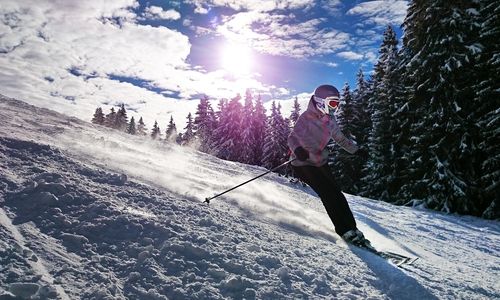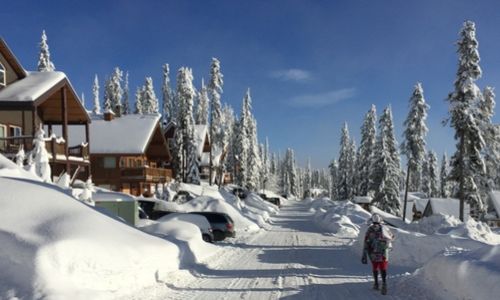With over 250 ski areas across the country, there are plenty of places to work during a ski season in Canada. This guide will break down the main differences between Canadian ski areas and resorts.
While reading, consider what kind of ski season experience you are looking for.
- Do you want to be able to ski-out of your accommodation directly onto the slopes?
- Are you an advanced skier or snowboarder looking for some gnarly terrain to shred?
- Would you prefer to be in an isolated location close to one ski resort or in a busier area with choice of resorts?
- Do you want to live in a ski village or town with lots of restaurants, nightlife and other services?
- Or would you prefer a quieter resort that has more distinctive Canadian character?
- What kind of climate are you comfortable with? Super cold and dry or wet and mildly cold…or somewhere in the middle?
Asking yourself these questions is the easiest way to narrow down where you may be looking to work.
[Waymark map_id="94"]This post includes some affiliate links. If you make a qualifying purchase through one of these links, I may receive a small commission at no extra cost to you.
British Columbia’s coastal mountains
Located: Vancouver Island and the coast of mainland British Columbia.
What to expect: The West Coast resorts are home to powder. It’s not the crisp, dry stuff seen further east but there is the potential to receive more than 10 metres of the white stuff over the season.
Whistler Blackcomb is the granddaddy of all Canadian resorts while Grouse, Seymour and Cypress offer a part-time ski resort experience for those who don’t want to travel too far from city comforts.
Typical ski season length: December to early April, with the exception of Whistler (November to May)
Ski resorts: Whistler Blackcomb, Grouse Mountain, Mount Seymour, Cypress Mountain, Mount Washington, Mt Cain
Interior British Columbia
Located: Everywhere east of the coastal mountains (above) but west of the Kootenays. Southern interior resorts are within 4-6 hours of Vancouver.
What to expect: Light, champagne powder is the hallmark of this region. Temperatures are cold, but not usually extreme. Resorts range from huge, super family-friendly resorts like Big White to tiny two lift operations like Baldy Resort and Manning Park.
Typical ski season length: December to early April with the exception of Big White and Sun Peaks (late November to mid April)
Ski resorts: Sun Peaks, Big White, Silver Star, Apex, Baldy Mountain Resort, Manning Park, Powder King, Hudson Bay Mountain
British Columbia Kootenays
Located: All mountains within British Columbia to the south and east of Revelstoke
What to expect: Home of the ‘Powder Highway,’ the Kootenays hosts half a dozen small and mid-sized characterful ski resorts. If you’re looking to work at a ski resort that is a bit off the beaten path, this is the place. These resorts are favoured by BC locals, especially those looking for a challenge. Powder is plentiful and wonderfully light.
Typical ski season length: December to April
Ski resorts: Revelstoke, Red Mountain, Kimberley, Fernie, Panorama, Kicking Horse, Whitewater
Rocky Mountains
Located: Along the famous Rocky Mountain range in Alberta.
What to expect: If you don’t like to be limited to just one ski resort, head to the town of Banff in Alberta. There are three resorts in the local vicinity – it would be difficult to get bored here! Snow is less abundant than further west but the powder is dry. The ski season in this area is the longest in Canada. The downside is extremely cold winter temperatures; be sure to pack your layers. Note that minimum wage is higher in Alberta than BC and taxes also lower.
Typical ski season length: November to May
Ski resorts: Sunshine Village, Lake Louise, Nakiska, Marmot Basin, Castle Mountain
Central and Eastern Canada
Located: Ontario, Quebec, East Coast
What to expect: Found at lower elevations than their western cousins, ski resorts in Eastern Canada are worth a look. Though typically smaller in size, Eastern resorts are still incredibly popular and draw thousands of visitors every winter. Snow is usually good quality, however, it can be thin on the ground some years. The largest ski resorts on the East Coast are in Ontario and Quebec.
Typical ski season length: December to April
Ski resorts: Mont Tremblant, Blue Mountain, Le Massif, Marble Mountain, Asessippi Ski Resort
Rest of Canada
There are dozens of smaller ski hills dotted around the rest of Canada all the way from Northern BC to the Prairies, Maritimes and Newfoundland. They have not been included here as these small ski hills do not usually hire many international staff. This is often due to isolation, limited opening hours and/or few job opportunities.
If you find yourself located near one, there is no harm in applying for work but be aware it is likely to be part-time work with no staff accommodation or transport available.
Typical ski season length: December to March/early April
Whistler vs. Banff
For many people heading to Canada for a ski season, the main question is whether to head to Whistler or Banff.
It is a personal decision and there is no wrong answer but here is a quick comparisons to help.
Whistler
Location: Coastal mountains, British Columbia
Accessibility: Two hour drive from Vancouver
Vibe: Traditional ski-in, ski-out village adjacent to Canada’s largest ski resort
Population: Around 12,000 year round
Weather: Lots of snow (wetter), cold
Ski resorts: Whistler Blackcomb
Ski resort staff accommodation: Yes, in Whistler Village
Minimum wage: $15.65 (2022)
Banff
Location: Rocky Mountains, Alberta
Accessibility: 90 minute drive from Calgary
Vibe: Resort town located within a National Park (very busy in summer)
Population: Around 8,000 year round
Weather: Drier snow, colder
Ski resorts: Sunshine Village, Lake Louise, Nakiska, all within one hour (by road)
Ski resort staff accommodation: Yes but not in Banff itself
Minimum wage: $15.00 (2022)
Alternatives to Whistler and Banff
Whistler and Banff are undoubtedly popular but this also means that costs are higher as well as competition for jobs and accommodation.
Consider these ski resort alternatives:
Large ski-in, ski-out villages: Big White, Silver Star, Sun Peaks, Mont Tremblant, Blue Mountain
Challenging terrain: Revelstoke, Kicking Horse
Classic small town ski resorts: Fernie, Red Mountain, Panorama, Apex, Mount Washington, Revelstoke, Kimberly
Located in a National/Provincial Park: Manning Park, Marmot Basin
Small but mighty: Baldy Mountain Resort, Powder King
Planning a ski season in Canada? Here are some helpful resources
Secure your working holiday visa – your first step to an amazing ski season in Canada is to apply for the IEC program
Research Canadian ski resorts and apply for work – Get the low down on Canada’s huge range of ski resorts and learn tips and tricks for finding a job
Book arrival accommodation – It’s a smart idea to spend at least a few days in whichever Canadian city you land in. Booking.com usually offers the best rates for hostels and hotels
Don’t forget travel insurance – A mandatory part of the IEC working holiday program in Canada, travel insurance also protects you against serious medical care costs in case of illness or injury. I have personally used True Traveller
Get prepared for arrival in Canada – This moving guide includes everything you need to know about immigration, getting a local Canadian number, opening a bank account and more
Related posts



1 thought on “Where to Work a Ski Season in Canada”
Comments are closed.